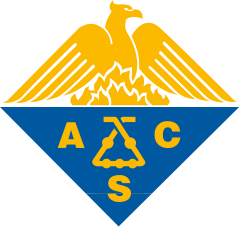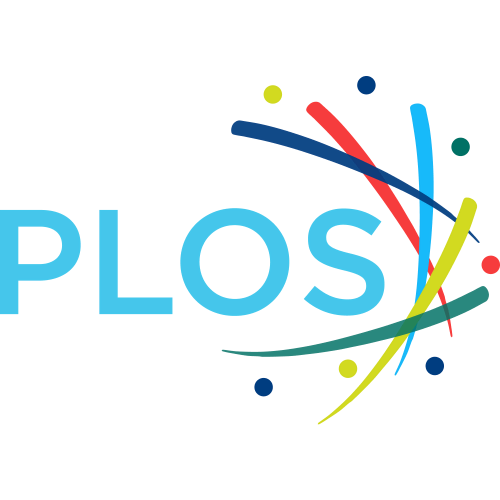Open Access


Development of a protein–ligand extended connectivity (PLEC) fingerprint and its application for binding affinity predictions
Publication type: Journal Article
Publication date: 2018-09-08
scimago Q1
wos Q1
SJR: 2.451
CiteScore: 9.6
Impact factor: 5.4
ISSN: 13674803, 13674811, 14602059
PubMed ID:
30202917
Biochemistry
Computer Science Applications
Molecular Biology
Statistics and Probability
Computational Mathematics
Computational Theory and Mathematics
Abstract
Fingerprints (FPs) are the most common small molecule representation in cheminformatics. There are a wide variety of FPs, and the Extended Connectivity Fingerprint (ECFP) is one of the best-suited for general applications. Despite the overall FP abundance, only a few FPs represent the 3D structure of the molecule, and hardly any encode protein-ligand interactions.Here, we present a Protein-Ligand Extended Connectivity (PLEC) FP that implicitly encodes protein-ligand interactions by pairing the ECFP environments from the ligand and the protein. PLEC FPs were used to construct different machine learning models tailored for predicting protein-ligand affinities (pKi∕d). Even the simplest linear model built on the PLEC FP achieved Rp = 0.817 on the Protein Databank (PDB) bind v2016 'core set', demonstrating its descriptive power.The PLEC FP has been implemented in the Open Drug Discovery Toolkit (https://github.com/oddt/oddt).Supplementary data are available at Bioinformatics online.
Found
Nothing found, try to update filter.
Found
Nothing found, try to update filter.
Top-30
Journals
|
5
10
15
20
25
|
|
|
Journal of Chemical Information and Modeling
21 publications, 15.33%
|
|
|
Briefings in Bioinformatics
12 publications, 8.76%
|
|
|
Journal of Cheminformatics
9 publications, 6.57%
|
|
|
Bioinformatics
5 publications, 3.65%
|
|
|
Molecular Informatics
3 publications, 2.19%
|
|
|
Drug Discovery Today
3 publications, 2.19%
|
|
|
Computational and Structural Biotechnology Journal
3 publications, 2.19%
|
|
|
PLoS Computational Biology
3 publications, 2.19%
|
|
|
Wiley Interdisciplinary Reviews: Computational Molecular Science
3 publications, 2.19%
|
|
|
PeerJ
2 publications, 1.46%
|
|
|
Molecules
2 publications, 1.46%
|
|
|
Nature Machine Intelligence
2 publications, 1.46%
|
|
|
Drug Discovery Today: Technologies
2 publications, 1.46%
|
|
|
ACS Omega
2 publications, 1.46%
|
|
|
Physical Chemistry Chemical Physics
2 publications, 1.46%
|
|
|
Lecture Notes in Computer Science
2 publications, 1.46%
|
|
|
Computers in Biology and Medicine
2 publications, 1.46%
|
|
|
Digital Discovery
2 publications, 1.46%
|
|
|
Biophysics Reviews
1 publication, 0.73%
|
|
|
Royal Society Open Science
1 publication, 0.73%
|
|
|
International Journal of Molecular Sciences
1 publication, 0.73%
|
|
|
Electronics (Switzerland)
1 publication, 0.73%
|
|
|
Frontiers in Bioinformatics
1 publication, 0.73%
|
|
|
BMC Bioinformatics
1 publication, 0.73%
|
|
|
Scientific data
1 publication, 0.73%
|
|
|
Acta Mathematica Sinica, English Series
1 publication, 0.73%
|
|
|
Cell Reports Medicine
1 publication, 0.73%
|
|
|
Technology and Health Care
1 publication, 0.73%
|
|
|
Archives of Biochemistry and Biophysics
1 publication, 0.73%
|
|
|
5
10
15
20
25
|
Publishers
|
5
10
15
20
25
30
|
|
|
American Chemical Society (ACS)
27 publications, 19.71%
|
|
|
Springer Nature
24 publications, 17.52%
|
|
|
Oxford University Press
18 publications, 13.14%
|
|
|
Elsevier
17 publications, 12.41%
|
|
|
Cold Spring Harbor Laboratory
12 publications, 8.76%
|
|
|
Wiley
9 publications, 6.57%
|
|
|
MDPI
5 publications, 3.65%
|
|
|
Royal Society of Chemistry (RSC)
4 publications, 2.92%
|
|
|
Public Library of Science (PLoS)
3 publications, 2.19%
|
|
|
PeerJ
2 publications, 1.46%
|
|
|
Frontiers Media S.A.
2 publications, 1.46%
|
|
|
Research Square Platform LLC
2 publications, 1.46%
|
|
|
AIP Publishing
1 publication, 0.73%
|
|
|
The Royal Society
1 publication, 0.73%
|
|
|
SAGE
1 publication, 0.73%
|
|
|
Taylor & Francis
1 publication, 0.73%
|
|
|
American Association for the Advancement of Science (AAAS)
1 publication, 0.73%
|
|
|
American Institute of Mathematical Sciences (AIMS)
1 publication, 0.73%
|
|
|
Proceedings of the National Academy of Sciences (PNAS)
1 publication, 0.73%
|
|
|
Mary Ann Liebert
1 publication, 0.73%
|
|
|
Institute of Electrical and Electronics Engineers (IEEE)
1 publication, 0.73%
|
|
|
IOP Publishing
1 publication, 0.73%
|
|
|
Walter de Gruyter
1 publication, 0.73%
|
|
|
Autonomous Non-profit Organization Editorial Board of the journal Uspekhi Khimii
1 publication, 0.73%
|
|
|
5
10
15
20
25
30
|
- We do not take into account publications without a DOI.
- Statistics recalculated weekly.
Are you a researcher?
Create a profile to get free access to personal recommendations for colleagues and new articles.
Metrics
137
Total citations:
137
Citations from 2024:
49
(35%)
Cite this
GOST |
RIS |
BibTex |
MLA
Cite this
GOST
Copy
Wójcikowski M. et al. Development of a protein–ligand extended connectivity (PLEC) fingerprint and its application for binding affinity predictions // Bioinformatics. 2018. Vol. 35. No. 8. pp. 1334-1341.
GOST all authors (up to 50)
Copy
Wójcikowski M., Kukiełka M., Stepniewska Dziubinska M., Siedlecki P. Development of a protein–ligand extended connectivity (PLEC) fingerprint and its application for binding affinity predictions // Bioinformatics. 2018. Vol. 35. No. 8. pp. 1334-1341.
Cite this
RIS
Copy
TY - JOUR
DO - 10.1093/bioinformatics/bty757
UR - https://doi.org/10.1093/bioinformatics/bty757
TI - Development of a protein–ligand extended connectivity (PLEC) fingerprint and its application for binding affinity predictions
T2 - Bioinformatics
AU - Wójcikowski, Maciej
AU - Kukiełka, Michał
AU - Stepniewska Dziubinska, Marta
AU - Siedlecki, Pawel
PY - 2018
DA - 2018/09/08
PB - Oxford University Press
SP - 1334-1341
IS - 8
VL - 35
PMID - 30202917
SN - 1367-4803
SN - 1367-4811
SN - 1460-2059
ER -
Cite this
BibTex (up to 50 authors)
Copy
@article{2018_Wójcikowski,
author = {Maciej Wójcikowski and Michał Kukiełka and Marta Stepniewska Dziubinska and Pawel Siedlecki},
title = {Development of a protein–ligand extended connectivity (PLEC) fingerprint and its application for binding affinity predictions},
journal = {Bioinformatics},
year = {2018},
volume = {35},
publisher = {Oxford University Press},
month = {sep},
url = {https://doi.org/10.1093/bioinformatics/bty757},
number = {8},
pages = {1334--1341},
doi = {10.1093/bioinformatics/bty757}
}
Cite this
MLA
Copy
Wójcikowski, Maciej, et al. “Development of a protein–ligand extended connectivity (PLEC) fingerprint and its application for binding affinity predictions.” Bioinformatics, vol. 35, no. 8, Sep. 2018, pp. 1334-1341. https://doi.org/10.1093/bioinformatics/bty757.





























